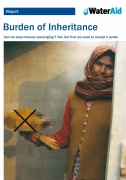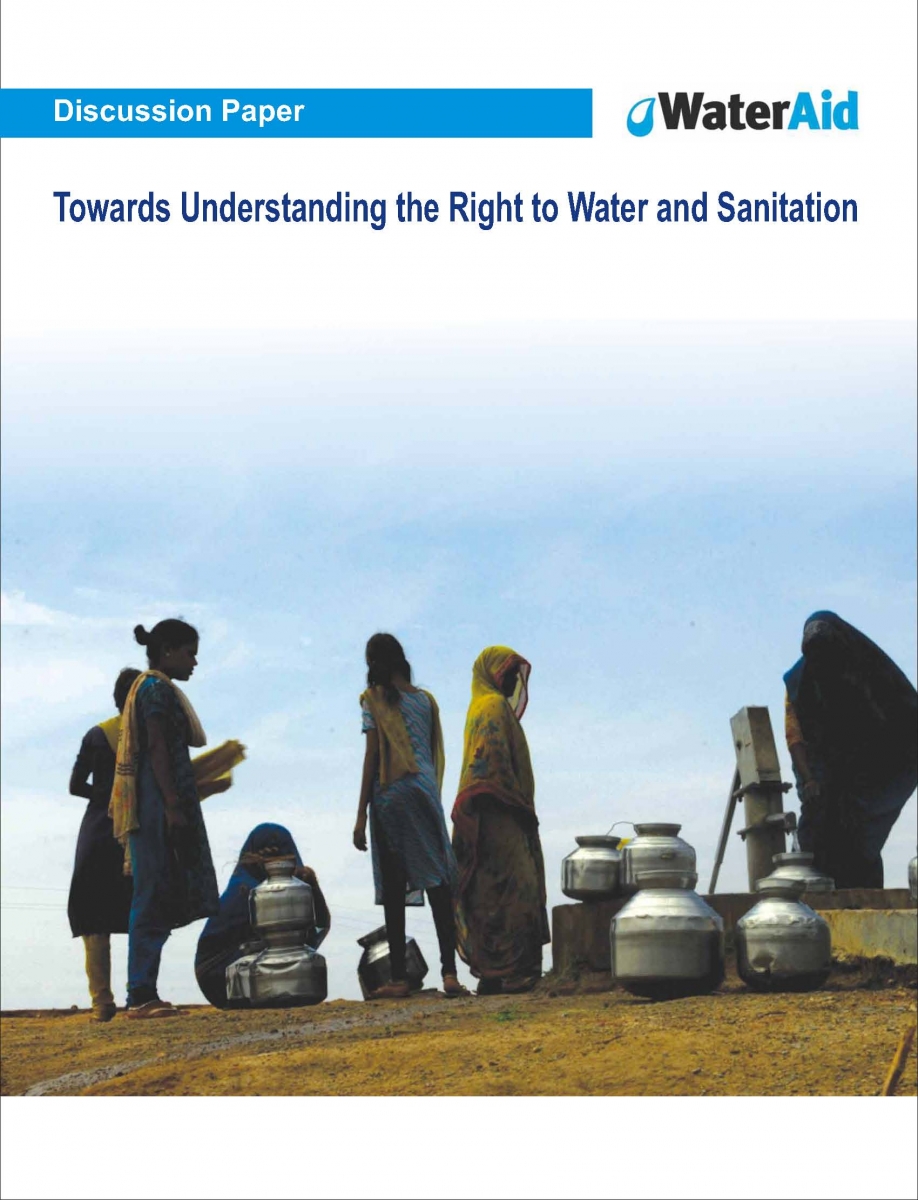WaterAid
Livestock rearers and fishers bear the brunt of cyclone Amphan
Posted on 18 Aug, 2020 10:14 AMThe Amphan cyclone that struck the Sundarbans in the month of May this year has wreaked havoc in the area destroying lives and livelihood. A lot of the locals living in the Sundarbans depend on animal husbandry and fishing to earn a living. The cyclone destroyed animal rearing shelters and swept away most of the cattle and domestic animals.

Locals struggle with WASH issues post-Amphan
Posted on 17 Aug, 2020 12:17 PMUN’s recognition of safe and clean drinking water and sanitation as a human right recently hit a decade and this makes us ponder even more about the situation in the Sundarbans after the Amphan cyclone. The destruction caused by Amphan in the Sundarbans poses a massive threat to the very right to safe and clean drinking water and sanitation of the people living there.

Amphan’s impact on farming and livelihood in Sunderbans
Posted on 11 Aug, 2020 05:46 PMThe Amphan cyclone has disfigured the lives of people living in the Sundarbans. Houses have been torn apart, farms have been filled with brackish water making the land unsuitable for farming and betel leaves have been destroyed. People in the Sundarbans are in a life-threatening situation with makeshift shacks to live in and no means to earn a living.

The miserable plight of sanitation workers
Posted on 29 Feb, 2020 06:01 PMMany of the challenges sanitation workers face, stem from their lack of visibility in society, says a report ‘Health, Safety and Dignity of Sanitation Workers’ produced jointly by The World Bank,

In wake of climate change, prioritise and invest in water security and clean drinking water
Posted on 04 Dec, 2019 05:33 PMWhile climate activists and world leaders were gathering in Paris in the first week of December 2015 to discuss the impact of climate change, the metropolis Chennai in the southern corner of India was inundated with floods.

Communal toilets in urban poverty pockets - A WaterAid report
Posted on 02 Sep, 2011 12:39 PMThis report published by WaterAid describes the findings of the study conducted in seven poverty pockets in Bhopal to look at patterns of use of communal latrine facilities. Much has been invested in building communal and public toilets and more resources are likely to continue to support this form of sanitation in dense urban areas in India.
However, there is no evidence available that is needed to quantify their potential contribution to reducing open defecation and faecal pollution in these environments, and identify those design features and management factors that encourage the highest usage rates by all household members. Also there is no information available on the impact of age and gender related differences in patterns of use.
Urban Population and WatSan: A brief status report by WaterAid (2009)
Posted on 03 May, 2010 04:44 PMThis document by WaterAid India, India highlights the poor water and sanitation situation in the urban slums in India, in the context of rapid urbanisation and the increase in the number of slums and slum dwellers in the cities.
Bihar needs to build 6,900 toilets a day to keep promise of total sanitation - A survey report by WaterAid (2009)
Posted on 01 May, 2010 04:51 PMThis brief report highlights the findings of an evaluation study conducted by WaterAid, India of the Total Sanitation Campaign (TSC), a national programme in India that ensures sanitation facilities in rural areas to eradicate open defecation. The study was conducted in the five states of Bihar, Chhattisgarh, Tripura, Karnataka and Haryana. This document highlights the findings of the evaluation study in the state of Bihar.
Burden of Inheritance: Can we stop manual scavenging? – A report by WaterAid India
Posted on 19 Apr, 2010 04:28 PM This report by WaterAid outlines how over one million people in the country continue to scrape an existence through manual scavenging, forced largely by social convention and caste prejudice, and calls for strong action to eradicate this practice.
This report by WaterAid outlines how over one million people in the country continue to scrape an existence through manual scavenging, forced largely by social convention and caste prejudice, and calls for strong action to eradicate this practice.
A violation of human rights, this discriminatory and demeaning practice was outlawed by the Indian Parliament in 1993 but still continues today. India has missed three deadlines to make the country 'manual-scavenger free'. India's booming cities help keep the practice alive, as there is often little infrastructure for sanitary sewerage and waste disposal systems.
The report tries to seek answers to why this practice continues despite:
- Availability of other dignified livelihood sources, for the people in this occupation?
- Other cleaner options for survival existing in cities and towns?
- Feasible and viable technological alternatives being available to dry toilets, one of the drivers of this occupation?
Towards understanding the right to water and sanitation - A discussion paper by WaterAid India (2009)
Posted on 23 Mar, 2010 06:27 AM The right to water and sanitation is necessary for the enjoyment of other human rights, including the right to life and human dignity, the right to health, the right to adequate food, the right to development and the right to a healthy environment.
The right to water and sanitation is necessary for the enjoyment of other human rights, including the right to life and human dignity, the right to health, the right to adequate food, the right to development and the right to a healthy environment.
This discussion paper from WaterAid India, examines the need and background of the right to water and sanitation (RTWS), in both the global context (using existing International Human Rights conventions) and in the Indian context (using the Indian Constitution).
The paper lays down specific details of what a RTWS would entail, in terms of exact provisions that citizens could be entitled to. It also details the difference between RTWS and water rights, examines the judicial interpretation of such a right, using analysis of past cases related to RTWS.